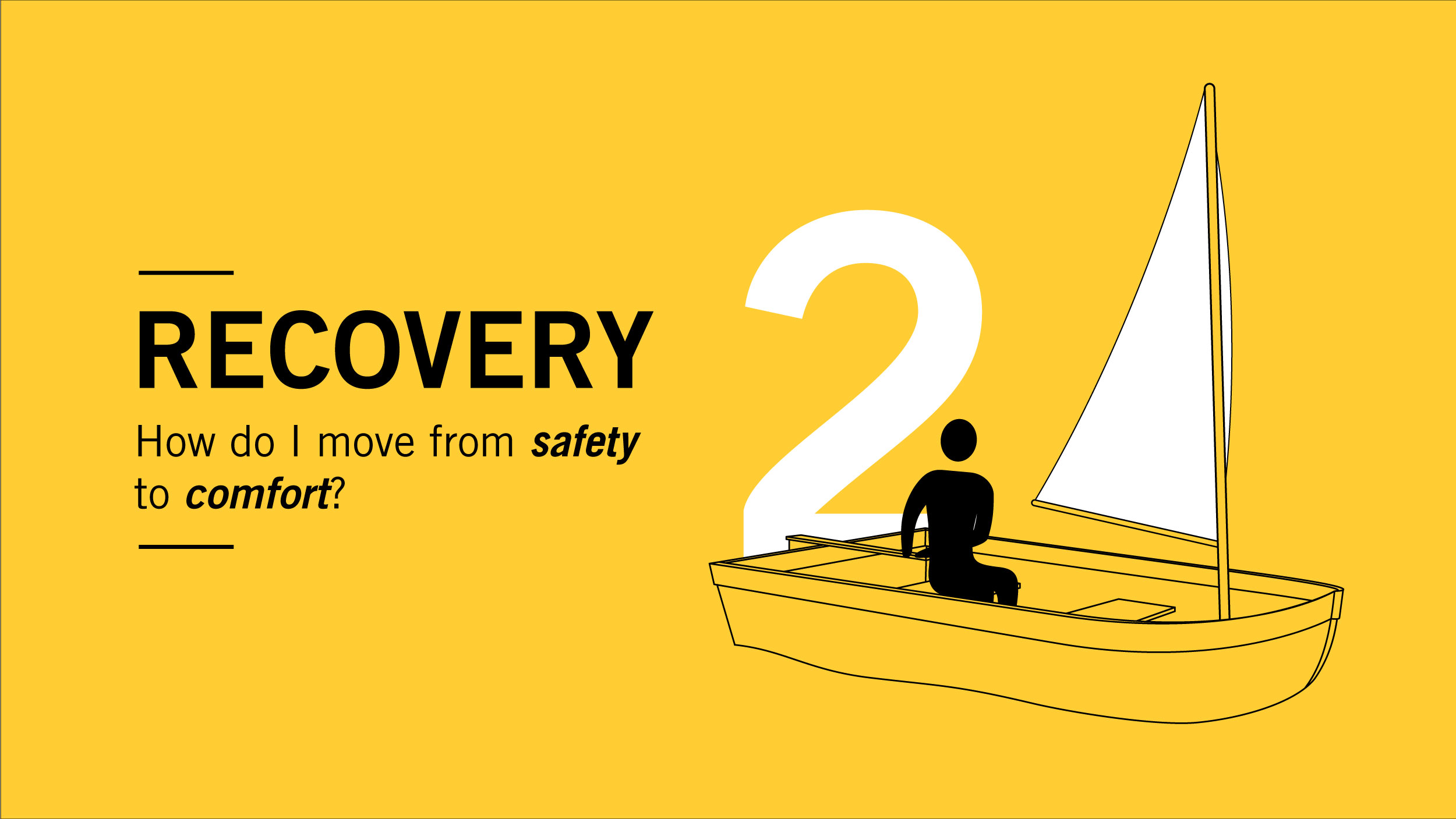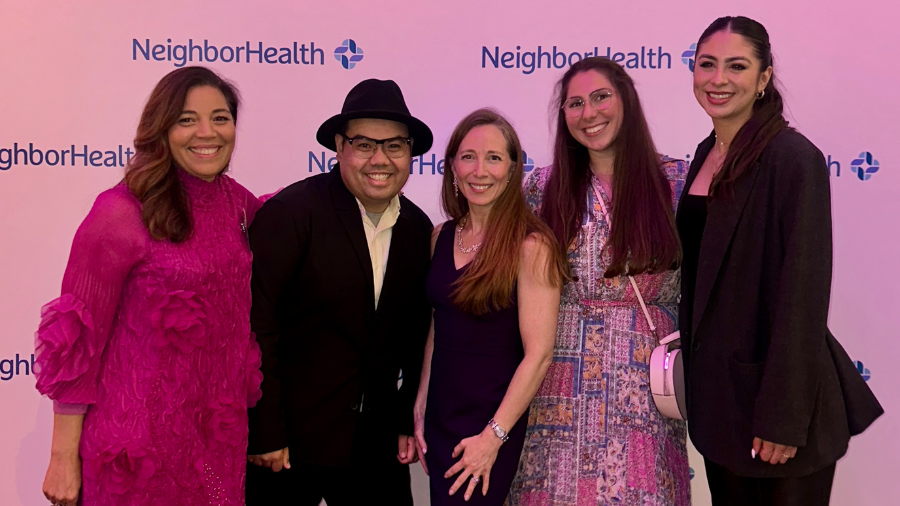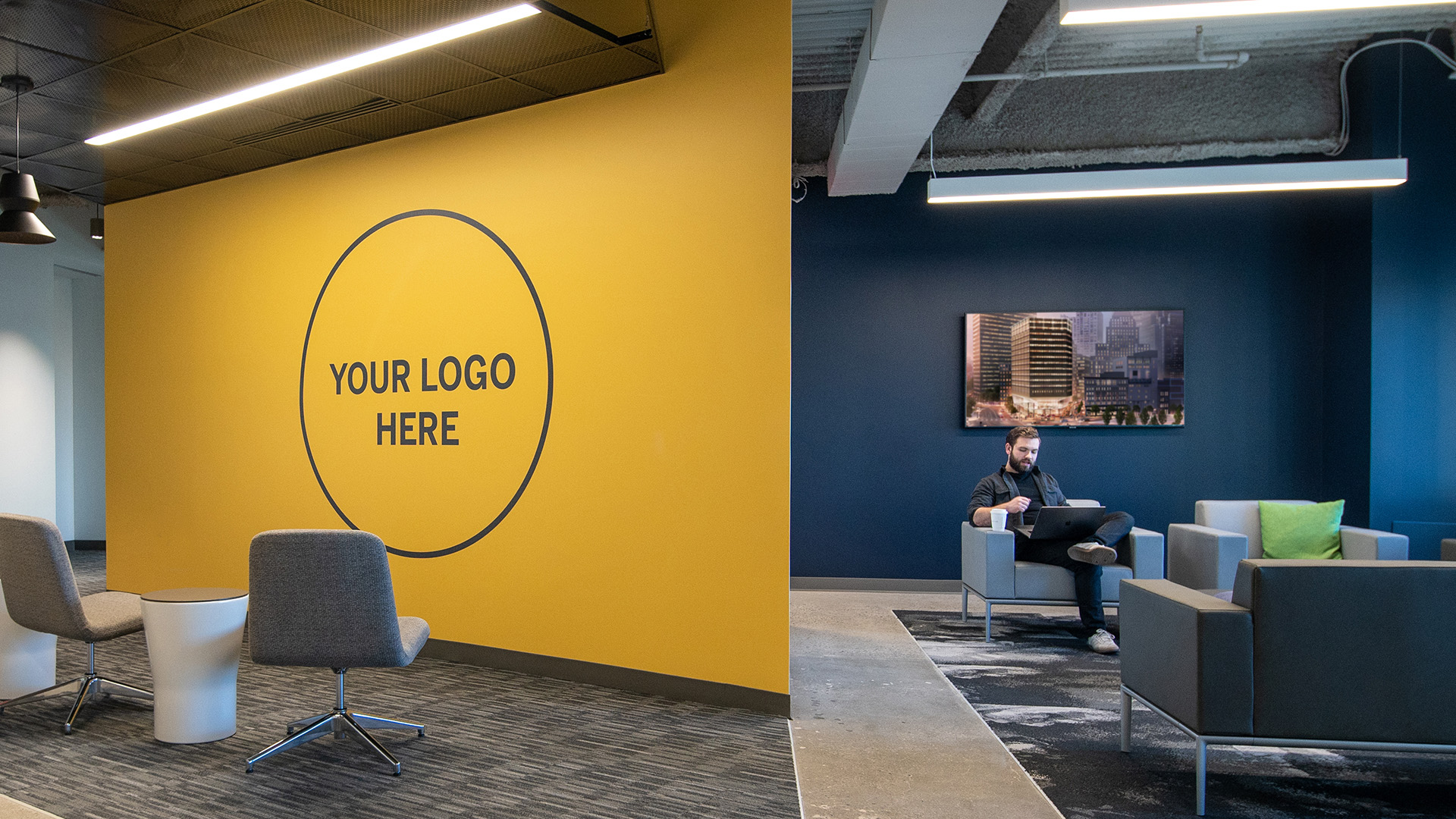In this second issue of our Post Pandemic Workplace series, we’re talking about how we begin to recover — how we start to feel more like ourselves again. How do we bring back creativity in a way that’s safe and healthy? Focusing on your company’s core brand values will help guide some of these decisions. Remember why you’re in business, re-distribute your mission and value statements to remind employees, and stay true to this brand identity. It will help steer your path and create a sense of normalcy for employees. As we see it, your Recovery plan is comprised of a kit of parts:
- Adapting the physical work environment
- Communicating the changes
- Creating a new service layer
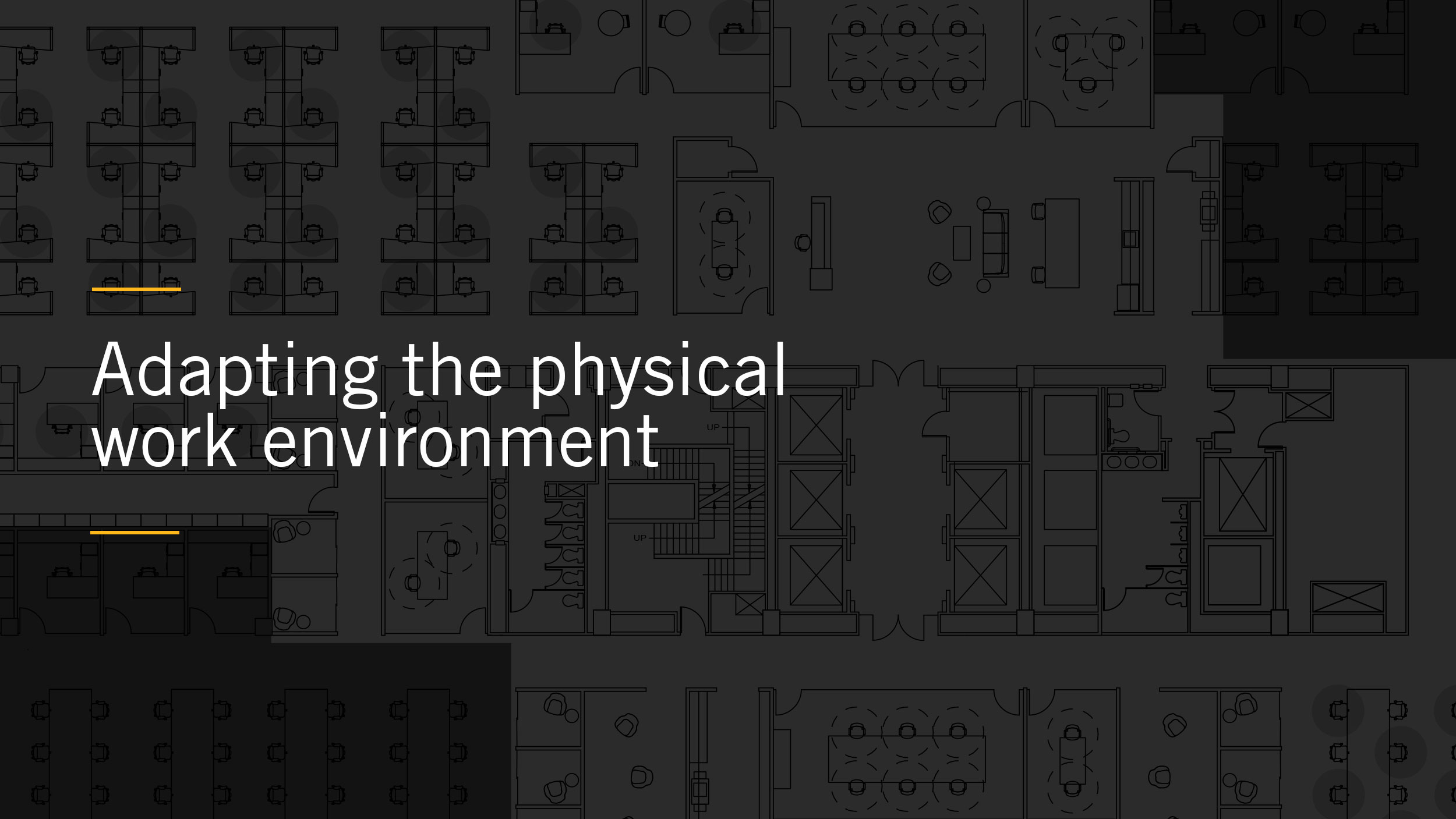
1. Adapting the physical work environment. Furniture and workspace layout changes are by far the most common and obvious changes taking place in the office. Rearranging and removing furniture are the first steps required to allow employees to maintain a safe distance from each other. We’ve found that it helps to think of employees in groups of 30 or less, or “neighborhoods,” to help make the creation of these layouts more manageable.
These neighborhoods can then also provide a framework for occupancy schedules. Rather than having everyone work in the office from nine to five, companies might want to bring in certain teams at specific times to lessen congestion. Once you know how your space can be reworked for various work modes, it’s easier to identify how many people are in the space and with what frequency. Specific neighborhoods are also then left empty at scheduled intervals which allows for a deep cleaning of that space.
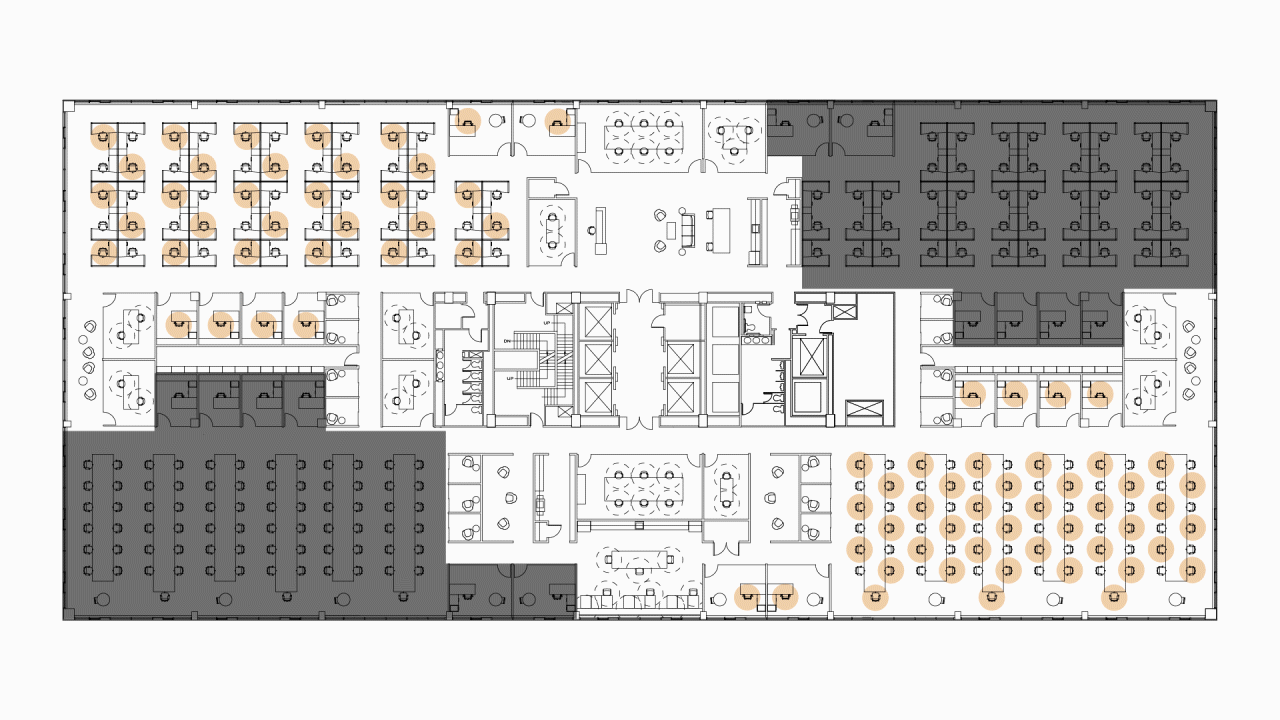
Some quick tips to keep in mind when reworking your layout:
- Collaboration tables and chairs should be removed from common areas. These spaces can be adapted for employee lockers or semi-private eating areas.
- Visitor furniture should be removed from private offices, and cafe seating should be reduced to one chair per table.
- Provide lockers or personal roll-away cabinets for each employee’s personal items so that there is less surface area with possible contaminants.
- Install plexiglass dividers between desks.
- Create set circulation paths throughout the office.
- Observe the 6’ rule. Install graphics that help employees visualize this distance in real terms.
- Decrease room occupancy allowances and install signage with room limits.
- Use furniture and materials that can be easily cleaned.
- Personalize supplies such as white board markers, headsets, and chairs for each employee.
- Close off phone booths, game rooms, and shared food services for the first phase of return.
Some longer lead items include:
- Creating a “No Touch Office” by automating as much as possible (doors, soap dispensers, trash receptacles, lights, etc.)
- Investing in additional tele-com equipment to repurpose breakout rooms and smaller conference rooms for video demo or lab spaces. Bring in more robust tech such as multi cameras and screens.
- Investing in a robust scheduling system to include room reservations, occupancy limits, reserved seats, seating assignments, in-office versus remote attendance, etc.
- Move towards cleaner air filtration systems (HEPA filters / UV lighting). Re-evaluate your need for infrastructure systems that take into account new lighting, air quality, and technical systems. Building owners, take note: these are the new amenities, not beer on tap or game rooms.
Of course, this type of work environment strategy is exactly what we love here at LLM—digging deep into a company’s culture and operations to understand what makes it tick and then designing the perfect space to make it happen. Give us a shout if we can help sort out your workspace.
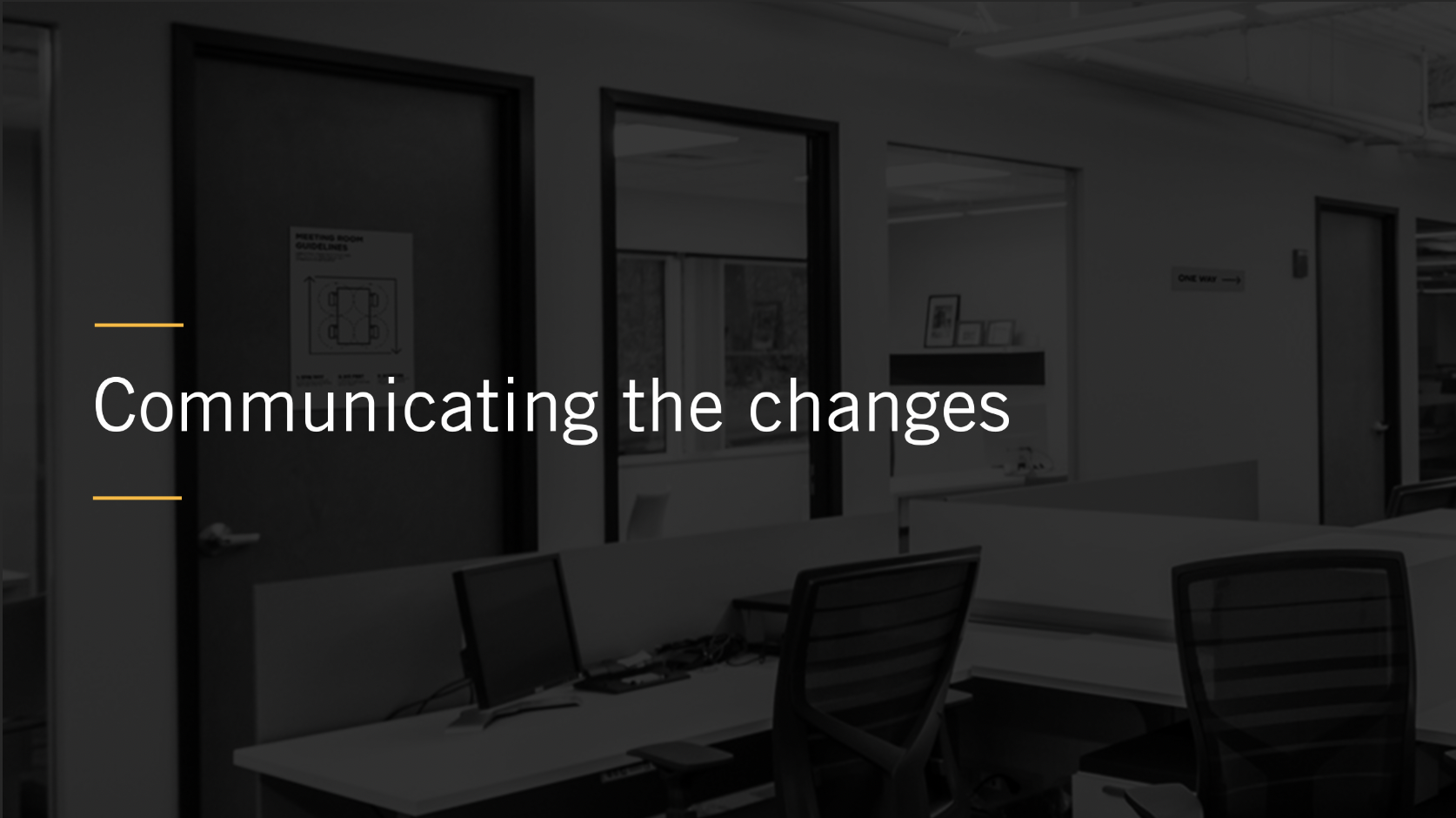
2. Communicating the changes. The workplace to which employees return will now be filled with posters, signs, and warnings to remind us of new protocols and regulations. Of course, these communications are necessary reminders, but it’s important that we don’t allow these visual pieces to overwhelm, to be intruders in an otherwise familiar space. The aesthetic and tone of the new signage should be in the same style and voice as your brand personality, signaling a small bit of continuity for returning employees.
Branded signage serves a few purposes. Firstly, it shows that you, as the employer, have put some thought into these new policies and the welfare of returning employees. Secondly, it helps ease the shock of change and helps create an atmosphere of cooperation, not policing. And lastly, relying on your brand identity helps to reinforce the common values that (hopefully) brought you all together in the first place.
The signage should speak to the language of your brand and create an environment that feels comfortable and reassuring. (Really, anything that goes into your office should be part of your brand–furniture, finishes, signage, etc…) Custom signage can be designed to fit right in with the workplace culture. For instance, if your company is more relaxed and creative, then the signage should match this vibe with a casual tone and bold visuals. For a more conservative company, office notices might be sophisticated, with a formal tone and muted colors. Whatever your brand personality, all signage should be clean, concise, and legible. Place it in areas where it’s not confusing, and make if informative without feeling sterile or alarming.
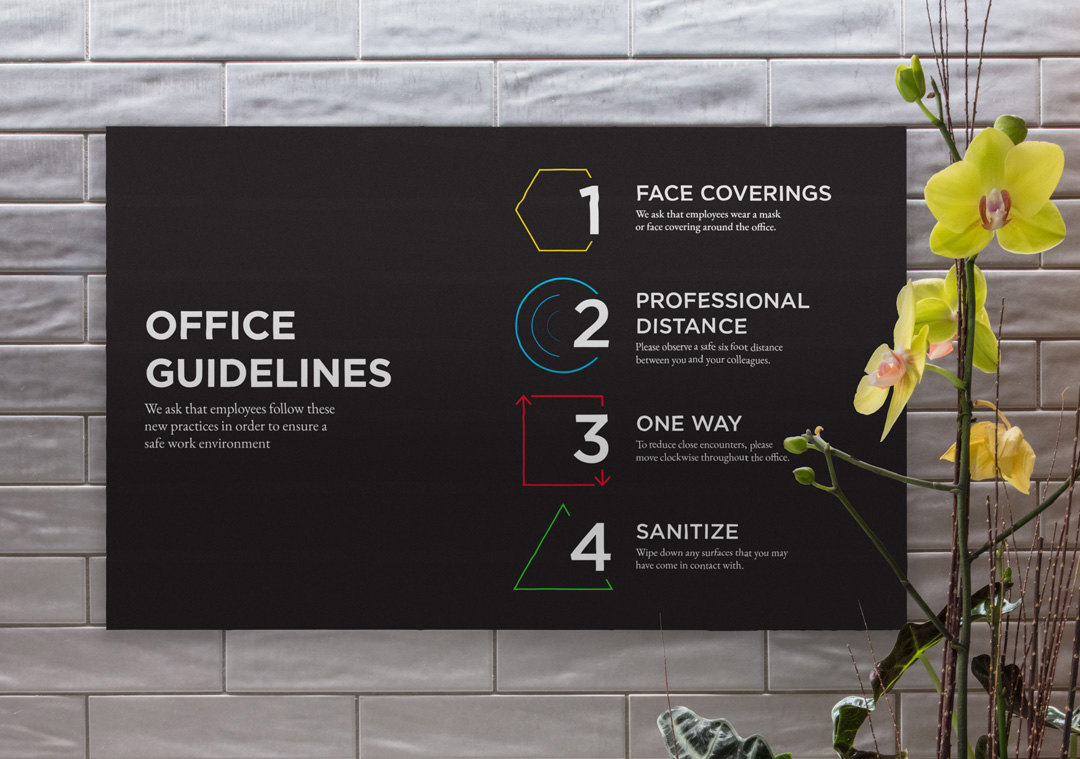
While not every workspace will need all of these signs (and the wording will vary for each), here’s a list of some basic notices that are typically required:
Reminders of rules and regulations:
- Wipe down surface after use
- Wash your hands for 20 seconds
- Stow your belongings in lockers
- Maintain 6’ of distance
- Room occupancy limits
- Masks required
Layout and path indicators
- Circulation paths (arrows/directional markers)
- Number of chairs/desks allowed in space
Additional
- Hygiene/sanitize stations
- Locker location
- Personal name labels for office supplies/chair
- Call the concierge (keep reading for more on this)
Another key component of your Recovery communications should include providing specific, clearly identified avenues of communication to direct employee questions and concerns about specific policies or changes. Is it clear where they can find information, updates, and policy updates? Do you have a method for collecting employee feedback about their concerns and issues?
Heightened transparency throughout this process is needed to create a safe environment, build trust, and boost morale. Communication is a two-way street and requires an iterative process to be most effective. We suggest frequent and regularly scheduled surveys (as simple as a Google Form) that check in on wellbeing, comfort levels, safety concerns, mental health issues, or any desired additional support. Feedback is ESSENTIAL to moving on.
The development of an internal website/intranet is also critical. This page (or site) creates a one-stop repository for information about company policies, news, updates, and options available to employees. Ideally, companies will also include an ambassador, or liaison, within each department/neighborhood that is not only particularly well informed about policies and plans, but is also available to receive employee feedback.
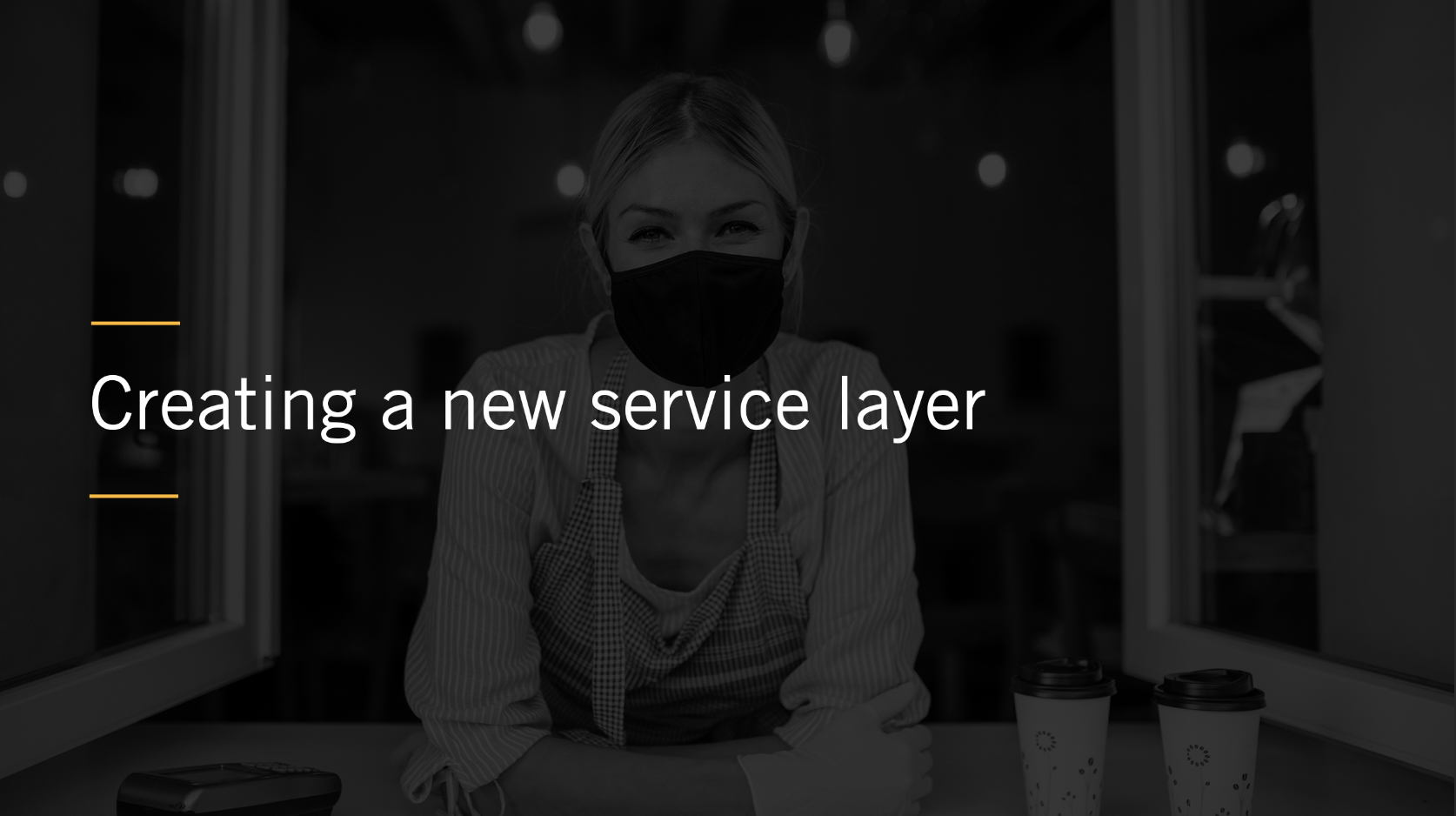
3. Creating a new service layer. While you most likely will have many digital tools available to manage a large portion of your operations, these are still separate from physical changes that will need to be accommodated. We believe that larger firms will benefit from an additional layer of service to manage certain necessities of this updated office workstyle. Have you thought about how to handle employees using the cafeteria, kitchens, water coolers, lunchrooms, and shared coffee?
To avoid congestion in public areas, all self-serve operations should become serviced by a team of trained operators. Instead of clusters of people in the kitchen grabbing coffee or snacks, employees will place an order from their desk, and a concierge, or steward, can coordinate delivery so there is one level of contact instead of multiple. This service role should also be responsible for ensuring that surfaces in high-traffic areas are disinfected and sanitized throughout the day. Instead of relying on group responsibility to clean and sanitize, we feel that creating a separate position to manage these activities will ensure tasks are completed regularly and with proper safety protocol.
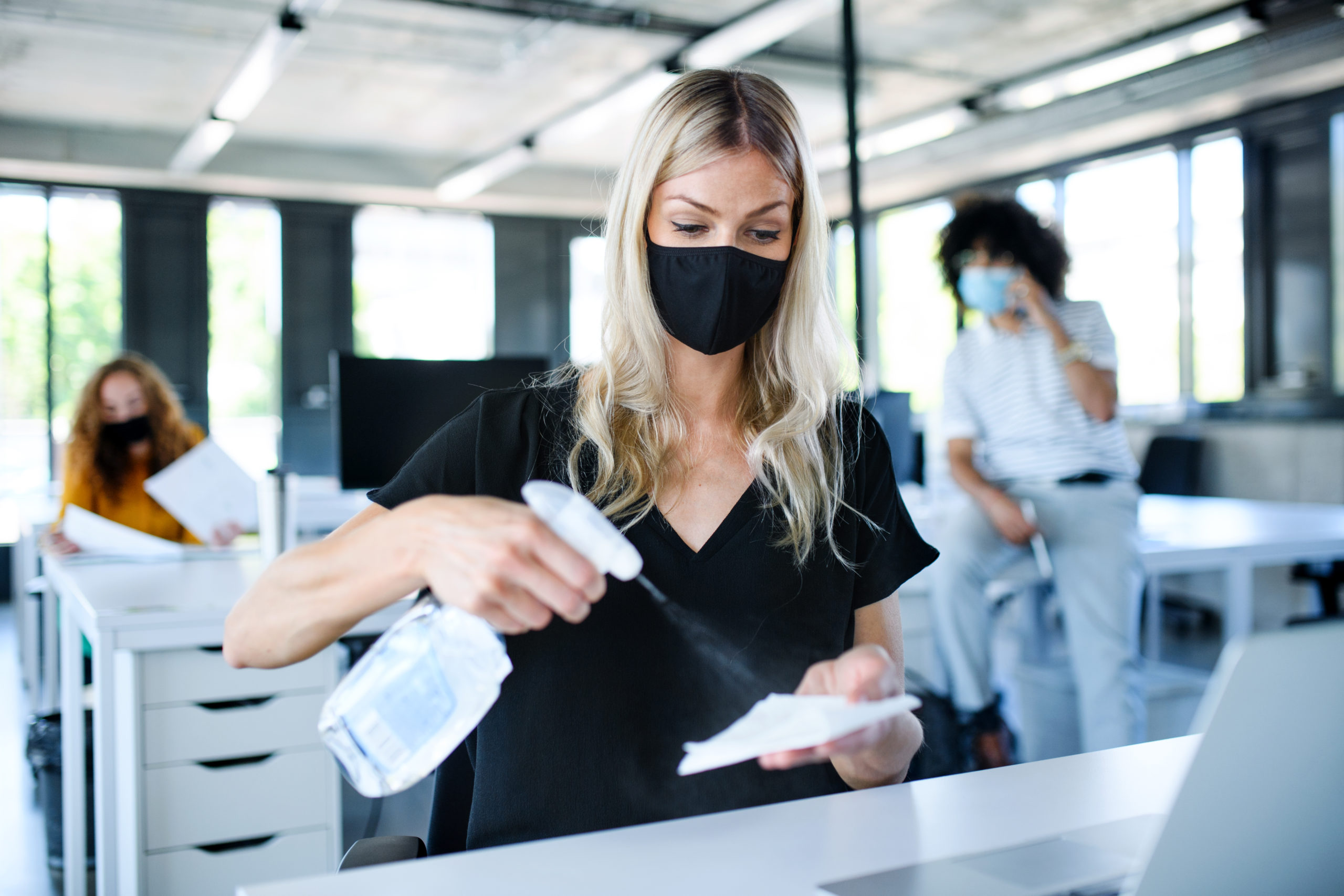
Food and high-traffic cleaning aren’t the only areas for service. With multiple remote and hybrid work styles, your IT inventory will need to be updated, maintained, and expanded. Depending on the make-up of the team, this concierge system could also help with setting up full service video conferencing, creating at-home tech packages for employees, and leasing hardware. Additional software systems such as scheduling management and room assignments can also be implemented. Along with the loss of collaborative contact with our fellow co-workers, we mourn the loss of amenities provided. We see the potential for this service layer to help coordinate both physical and mental health wellness opportunities for individual employees and small cohorts.
We believe there are several options to achieving this new level of service. Hiring an established team from an external company might make more sense for larger offices. These teams will already have a system in place and know how to work it. If you are a building operator, perhaps you will create your own team that services tenants—and this becomes the next hot amenity. Does your building have a service team in place to help companies maintain social distance internally, while providing needed food & beverage services? Is there a familiar team that moves through the office on a regular basis throughout the day to sanitize high-traffic areas? For smaller companies, this position could also provide an opportunity to create a role for employees whose positions have been lost or phased out due to current circumstances.
So there you have it. LLM Design’s strategy kit for a Post Pandemic Workplace Recovery. We’d love to help customize your kit around your brand personality and operational strategies. Give us a shout!
